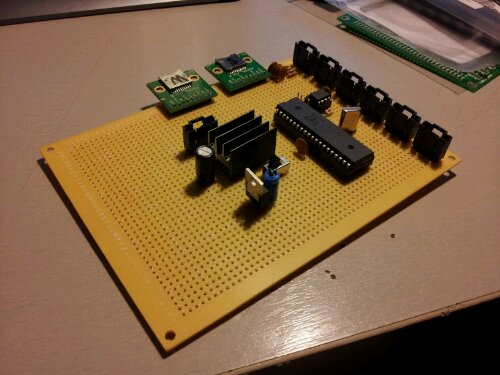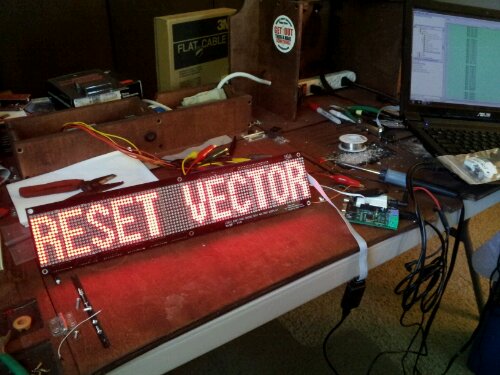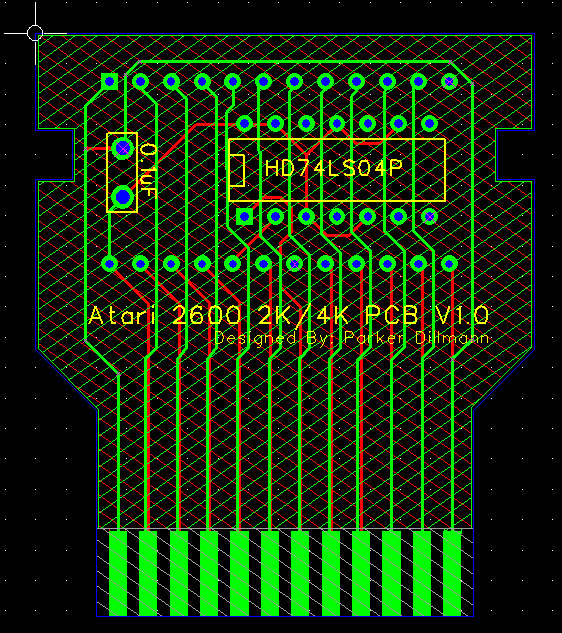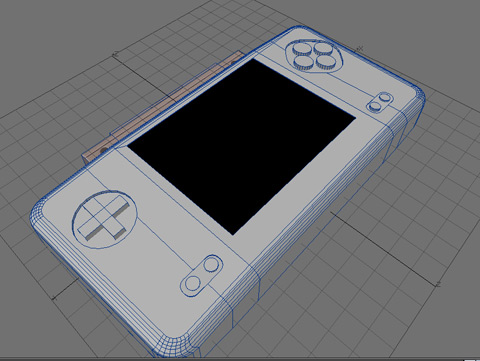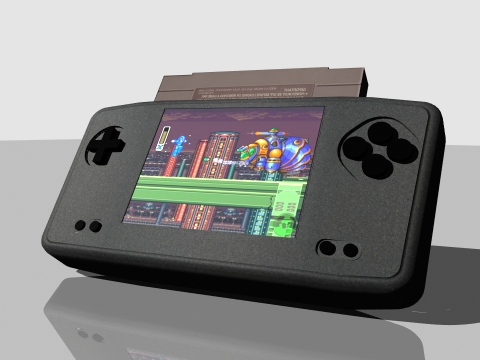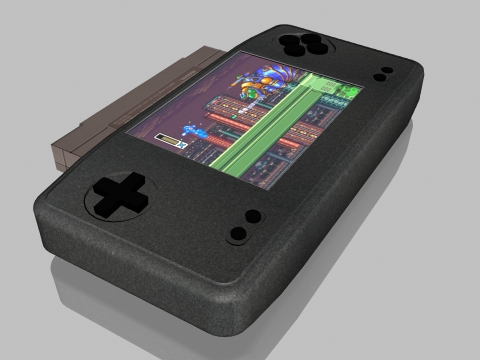Here is some Verilog code for a 32×128 DMD I am designing.
module LED_Matrix_32x128
(
clk,e_cnt,row_cnt,col,SDRAM_CS,SRAM_CS,LAT,DATA,SCLK
);input wire clk;
input wire LAT;
input wire DATA;
input wire SCLK;
output reg [63:0] col;
output reg [0:0] SDRAM_CS;
output reg [0:0] SRAM_CS;
output reg [5:0] row_cnt;
output reg [4:0] e_cnt;
reg [24:0] clk_slow;
reg [4096:0] col_buffer;
reg [63:0] col_temp [63:0];
initial
begin
col <= 16'b0000000000000000;
SDRAM_CS <= 1'b0;
SRAM_CS <= 1'b0;
clk_slow <= 16'b0000000000000000;
row_cnt <= 5'b00000;
e_cnt <= 4'b1000;
end
always @(posedge clk) clk_slow=clk_slow + 1'b1;
always @(posedge clk_slow[10])
begin
if(row_cnt > 5'b01111)
begin
row_cnt <= 5'b00000;
e_cnt <= {row[2:0],row[3]};
end
col <= col_temp[row_cnt];
row_cnt <= row_cnt + 1'b1;
end
always @(posedge SCLK)
begin
if(LAT)
begin
col_buffer <= {col_buffer[4094:0],DATA[0]};
end
else
begin
col_temp [0] <= col_buffer [4095:4032];
col_temp [1] <= col_buffer [4031:3968];
col_temp [2] <= col_buffer [3967:3904];
col_temp [3] <= col_buffer [3903:3840];
col_temp [4] <= col_buffer [3839:3776];
col_temp [5] <= col_buffer [3775:3712];
col_temp [6] <= col_buffer [3711:3648];
col_temp [7] <= col_buffer [3647:3584];
col_temp [8] <= col_buffer [3583:3520];
col_temp [9] <= col_buffer [3519:3456];
col_temp [10] <= col_buffer [3455:3392];
col_temp [11] <= col_buffer [3391:3328];
col_temp [12] <= col_buffer [3327:3264];
col_temp [13] <= col_buffer [3263:3200];
col_temp [14] <= col_buffer [3199:3136];
col_temp [15] <= col_buffer [3135:3072];
col_temp [16] <= col_buffer [3071:3008];
col_temp [17] <= col_buffer [3007:2944];
col_temp [18] <= col_buffer [2943:2880];
col_temp [19] <= col_buffer [2879:2816];
col_temp [20] <= col_buffer [2815:2752];
col_temp [21] <= col_buffer [2751:2688];
col_temp [22] <= col_buffer [2687:2624];
col_temp [23] <= col_buffer [2623:2560];
col_temp [24] <= col_buffer [2559:2496];
col_temp [25] <= col_buffer [2495:2432];
col_temp [26] <= col_buffer [2431:2368];
col_temp [27] <= col_buffer [2367:2304];
col_temp [28] <= col_buffer [2303:2240];
col_temp [29] <= col_buffer [2239:2176];
col_temp [30] <= col_buffer [2175:2112];
col_temp [31] <= col_buffer [2111:2048];
col_temp [32] <= col_buffer [2047:1984];
col_temp [33] <= col_buffer [1983:1920];
col_temp [34] <= col_buffer [1919:1856];
col_temp [35] <= col_buffer [1855:1792];
col_temp [36] <= col_buffer [1791:1728];
col_temp [37] <= col_buffer [1727:1664];
col_temp [38] <= col_buffer [1663:1600];
col_temp [39] <= col_buffer [1599:1536];
col_temp [40] <= col_buffer [1535:1472];
col_temp [41] <= col_buffer [1471:1408];
col_temp [42] <= col_buffer [1407:1344];
col_temp [43] <= col_buffer [1343:1280];
col_temp [44] <= col_buffer [1279:1216];
col_temp [45] <= col_buffer [1215:1152];
col_temp [46] <= col_buffer [1151:1088];
col_temp [47] <= col_buffer [1087:1024];
col_temp [48] <= col_buffer [1023:960];
col_temp [49] <= col_buffer [959:896];
col_temp [50] <= col_buffer [895:832];
col_temp [51] <= col_buffer [831:768];
col_temp [52] <= col_buffer [767:704];
col_temp [53] <= col_buffer [703:640];
col_temp [54] <= col_buffer [639:576];
col_temp [55] <= col_buffer [575:512];
col_temp [56] <= col_buffer [511:448];
col_temp [57] <= col_buffer [447:384];
col_temp [58] <= col_buffer [383:320];
col_temp [59] <= col_buffer [319:256];
col_temp [60] <= col_buffer [255:192];
col_temp [61] <= col_buffer [191:128];
col_temp [62] <= col_buffer [127:64];
col_temp [63] <= col_buffer [63:0];
end
end
endmodule

